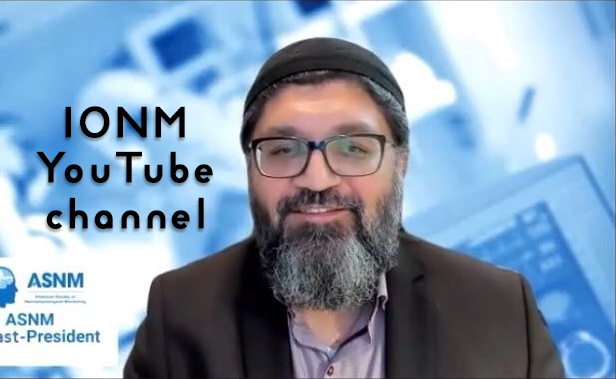The Impact of Neurophysiological Monitoring on Patient Outcomes in Carotid Endarterectomy: A Meta-Analysis
DOI:
https://doi.org/10.5281/zenodo.12588227Keywords:
Meta-analysis, carotid endarterectomy, CEA, intraoperative neurophysiological monitoring, IONM, electroencephalogram, EEG, somatosensory evoked potentials, SSEP, SEP, transcranial doppler, ultrasound, TCDAbstract
The 30-day stroke rate following a Carotid Endarterectomy (CEA) ranges between 2-6% and is associated with a three-fold increase in mortality. Various types of Intraoperative Neurological Monitoring (IONM) modalities are available to help detect changes in cerebral blood flow during this procedure. The primary aim of this meta-analysis was to evaluate the efficacy of the different (IONM) techniques used for this surgery and compare them to multiple modality studies. We identified relevant articles on PubMed (2000-2024), EBSCOhost (2000-2024), and Science Direct (2000-2024) to identify studies to include in this meta-analysis. We included literature that consisted of adult patients who underwent a CEA procedure under general anesthesia and were monitored with the specified IONM modalities. We calculated the mean specificities and sensitivities for each IONM Modality studied and are as follows: mean EEG sensitivity 41% and specificity 90%; mean TCD sensitivity 99% and specificity 83%; mean SSEP sensitivity 64% and specificity 88%; combined SSEP+EEG sensitivity 59% and specificity 99%. Each IONM modality presents its own unique set of challenges to determine severe deficits in cerebral blood flow. Given the high specificity or sensitivity observed across virtually all modalities, additional studies are needed to assess the effectiveness of combining the strengths of two modalities to enhance their capabilities.
References
Thirumala PD, Thiagarajan K, Gedela S, Crammond DJ, Balzer JR. Diagnostic accuracy of EEG changes during carotid endarterectomy in predicting perioperative strokes. J Clin Neurosci. 2016 Mar;25:1–9.
DaCosta M, Tadi P, Surowiec SM. Carotid Endarterectomy. In: StatPearls [Internet]. Treasure Island (FL): StatPearls Publishing; 2024 [cited 2024 Feb 19]. Available from: http://www.ncbi.nlm.nih.gov/books/NBK470582/
Hindenes LB, Håberg AK, Johnsen LH, Mathiesen EB, Robben D, Vangberg TR. Variations in the Circle of Willis in a large population sample using 3D TOF angiography: The Tromsø Study. Baltzer PAT, editor. PLoS ONE. 2020 Nov 3;15(11):e0241373.
Amantini A, Bartellil M, de Scisciolo G, Lombardi M, Macucci M, Rossi R, et al. Monitoring of somatosensory evoked potentials during carotid endarterectomy. J Neurol. 1992 May 1;239(5):241–7.
Fielmuth S, Uhlig T. The role of somatosensory evoked potentials in detecting cerebral ischaemia during carotid endarterectomy. EUR J ANAESTHESIOL (CAMBRIDGE). 2008 Aug;25(8):648–56.
Lam AM, Manninen PH, Ferguson GG, Nantau W. Monitoring Electrophysiologic Function during Carotid Endarterectomy: A Comparison of Somatosensory Evoked Potentials and Conventional Electroencephalogram. Anesthesiology. 1991 Jul 1;75(1):15–21.
Davis SF, Bamford JA. Intraoperative Monitoring for Carotid Endarterectomy. In: Davis SF, Kaye AD, editors. Principles of Neurophysiological Assessment, Mapping, and Monitoring [Internet]. Cham: Springer International Publishing; 2020 [cited 2024 Apr 9]. p. 229–40. Available from: https://doi.org/10.1007/978-3-030-22400-4_15
Moritz S, Kasprzak P, Arlt M, Taeger K, Metz C. Accuracy of cerebral monitoring in detecting cerebral ischemia during carotid endarterectomy: a comparison of transcranial Doppler sonography, near-infrared spectroscopy, stump pressure, and somatosensory evoked potentials. ANESTHESIOLOGY. 2007 Oct;107(4):563–9.
Ackerstaff RG, Moons KG, van de Vlasakker CJ, Moll FL, Vermeulen FE, Algra A, et al. Association of intraoperative transcranial doppler monitoring variables with stroke from carotid endarterectomy. STROKE. 2000 Aug;31(8):1817–23.
Thiagarajan K, Cheng HL, Huang JE, Natarajan P, Crammond DJ, Balzer JR, et al. Is Two Really Better Than One? Examining the Superiority of Dual Modality Neurophysiological Monitoring During Carotid Endarterectomy: A Meta-Analysis. World Neurosurg. 2015 Dec;84(6):1941-1949.e1.
Monaghan TF, Rahman SN, Agudelo CW, Wein AJ, Lazar JM, Everaert K, et al. Foundational Statistical Principles in Medical Research: Sensitivity, Specificity, Positive Predictive Value, and Negative Predictive Value. Medicina (Kaunas). 2021 May 16;57(5):503.
Chang R, Reddy RP, Sudadi S, Balzer J, Crammond DJ, Anetakis K, et al. Diagnostic accuracy of various EEG changes during carotid endarterectomy to detect 30-day perioperative stroke: A systematic review. Clin Neurophysiol. 2020 Jul;131(7):1508–16.
Reddy RP, Brahme IS, Karnati T, Balzer JR, Crammond DJ, Anetakis KM, et al. Diagnostic value of somatosensory evoked potential changes during carotid endarterectomy for 30-day perioperative stroke. Clinical Neurophysiology. 2018 Sep 1;129(9):1819–31.
Florence G, Guerit JM, Gueguen B. Electroencephalography (EEG) and somatosensory evoked potentials (SEP) to prevent cerebral ischaemia in the operating room. Neurophysiol Clin. 2004 Feb;34(1):17–32.
Pugliese F, Ruberto F, Tosi A, Martelli S, Bruno K, Summonti D, et al. Regional cerebral saturation versus transcranial Doppler during carotid endarterectomy under regional anaesthesia. EUR J ANAESTHESIOL (CAMBRIDGE). 2009 Aug;26(8):643–7.
Yun WS. Cerebral monitoring during carotid endarterectomy by transcranial Doppler ultrasonography. Ann Surg Treat Res. 2017;92(2):105.
Downloads
Published
How to Cite
Issue
Section
License
Copyright (c) 2024 J of Neurophysiological Monitoring

This work is licensed under a Creative Commons Attribution 4.0 International License.





